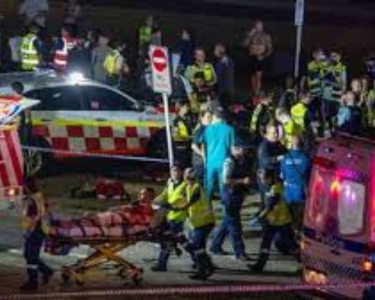Delhi’s Air Quality Worsens After Diwali Celebrations
As the Diwali festivities lit up the skies across Delhi-NCR, the city’s air quality plunged sharply, with 36 of 38 AQI monitoring stations falling into the “red zone”, indicating dangerously high pollution levels.
At 10 PM on Diwali night, Delhi’s overall Air Quality Index (AQI) stood at 344, categorized as “very poor”, with several areas recording readings above 400, reaching the “severe” range.
Severe Pollution Levels Recorded Across Delhi
According to data from the Central Pollution Control Board (CPCB) via the SAMEER app, four key stations—Dwarka (417), Ashok Vihar (404), Wazirpur (423), and Anand Vihar (404)—reported severe air quality levels.
The city’s 24-hour average AQI reported at 4 PM on Diwali day stood at 345, higher than the 326 recorded on Sunday, confirming a steady rise in pollution levels, as per official data.
Majority of Monitoring Sites in ‘Very Poor’ Category
During the afternoon, 31 out of 38 stations reported “very poor” air quality, while three stations crossed into the “severe” category.
Experts have warned that Delhi’s air quality is likely to deteriorate further, slipping into the “severe zone” across most areas by Tuesday and Wednesday.
AQI Classification Explained
The CPCB classifies AQI levels as follows:
-
0–50: Good
-
51–100: Satisfactory
-
101–200: Moderate
-
201–300: Poor
-
301–400: Very Poor
-
401–500: Severe
Currently, a majority of Delhi’s stations fall between very poor and severe, making the air unsafe for outdoor activities and especially harmful for vulnerable groups.
Sources of Delhi’s Air Pollution
Data from the Decision Support System (DSS) revealed that on Monday, vehicle emissions accounted for 15.6% of Delhi’s total air pollution, while industrial emissions and other sources contributed around 23.3%.
Additionally, firecracker emissions during Diwali night and low wind speeds further worsened the city’s air quality, trapping pollutants closer to the ground.
Authorities Implement Stage II of GRAP
In response to the rising pollution levels, the Commission for Air Quality Management (CAQM) activated Stage II of the Graded Response Action Plan (GRAP) across Delhi-NCR.
This move followed detailed reviews by the IMD (India Meteorological Department) and IITM (Indian Institute of Tropical Meteorology), forecasting a further dip in air quality in the coming days.
Supreme Court Guidelines on Firecrackers
Earlier on October 15, the Supreme Court of India allowed the sale and use of green firecrackers in Delhi-NCR, limiting the permissible time slots to:
-
6 AM – 7 PM, and
-
8 PM – 10 PM
on Diwali Eve and the festival day itself.
Despite these restrictions, widespread use of fireworks contributed significantly to Delhi’s post-Diwali smog and pollution spike.
Delhi Faces Another Year of Post-Diwali Smog
With air quality dipping into the hazardous range, Delhi continues to battle the annual post-Diwali pollution crisis. Experts emphasize the urgent need for stronger enforcement, public awareness, and sustainable celebrations to reduce emissions in the years ahead.







